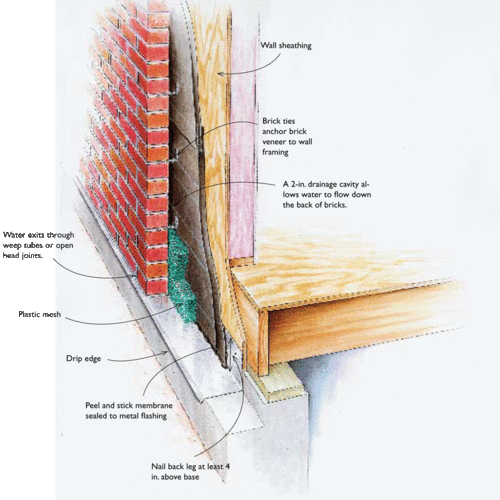ABOUT STUCCO One-coat, three-coat, EIFS Traditional modern stucco is a portland-cement plaster applied in three coats to a building exterior. Stucco is more expensive than some types of cladding — vinyl and some types of wood, for example — but the surface is durable, vapor permeable, fire-resistant, and suitable for any climate, with proper detailing. As long as the surface has been installed with details that address inward solar vapor drive and wind-driven rain, stucco should require little maintenance unless the surface is damaged. There are many types of stucco claddings, but they can best be split into three primary types: traditional three-coat stucco; newer one-coat stucco; and exterior insulating and finish systems (EIFS). Each system has its advantages and drawbacks. Each system can be a durable, protective cladding, but each requires a different set of installation details to achieve these results. Each can create an exterior air barrier, depending, again, on details at penetrations, transitions, and the edges of the wall cladding. Three-coat stucco is a longstanding, nonproprietary cladding system that has a scratch, then base, then finish coat, resulting in a 7/8-inch- to 1-inch-thick cladding. This system is the most time and labor intensive. One-coat stucco systems have just one base coat about 1/2-inch thick with a thin finish coat, so these claddings are sometimes called “two-coat.” The base coat is a blend of portland cement, fibers, and proprietary additives, with each system carrying its own International Code Council (ICC) Evaluation Service (ES) report that dictates the installation details. There is less labor and time required for this system than three-coat stucco, but custom installation standards must be followed. Exterior insulation and finish systems (EIFS) are essentially one-coat systems, but the marriage of a stucco finish to exterior rigid insulation brings with it different water-management details than the…

This article is only available to GBA Prime Members
Sign up for a free trial and get instant access to this article as well as GBA’s complete library of premium articles and
construction details.
Start Free Trial
Already a member? Log in




2 Comments
EIFS over 8" SIP for zone 8 new home construction.
I am in planning stage for new home construction in AK. I plan to use 8" SIP for main and second floor. Would like to use EIFS for exterior cladding. I do not see any problems with this but am not a builder and suspect my builder may think little of this thought. Do you have recommendations on combining EIFS with SIP?
Response to Scott Russi
Scott,
There could be several problems.
First of all, both the SIP manufacturer and the EIFS manufacturer (or contractor) would have to agree that such an installation didn't violate the terms of the SIP warranty or the EIFS warranty.
Secondly, it's generally not a good idea to sandwich a material like OSB between two layers of vapor-impermeable foam.
Log in or become a member to post a comment.
Sign up Log in